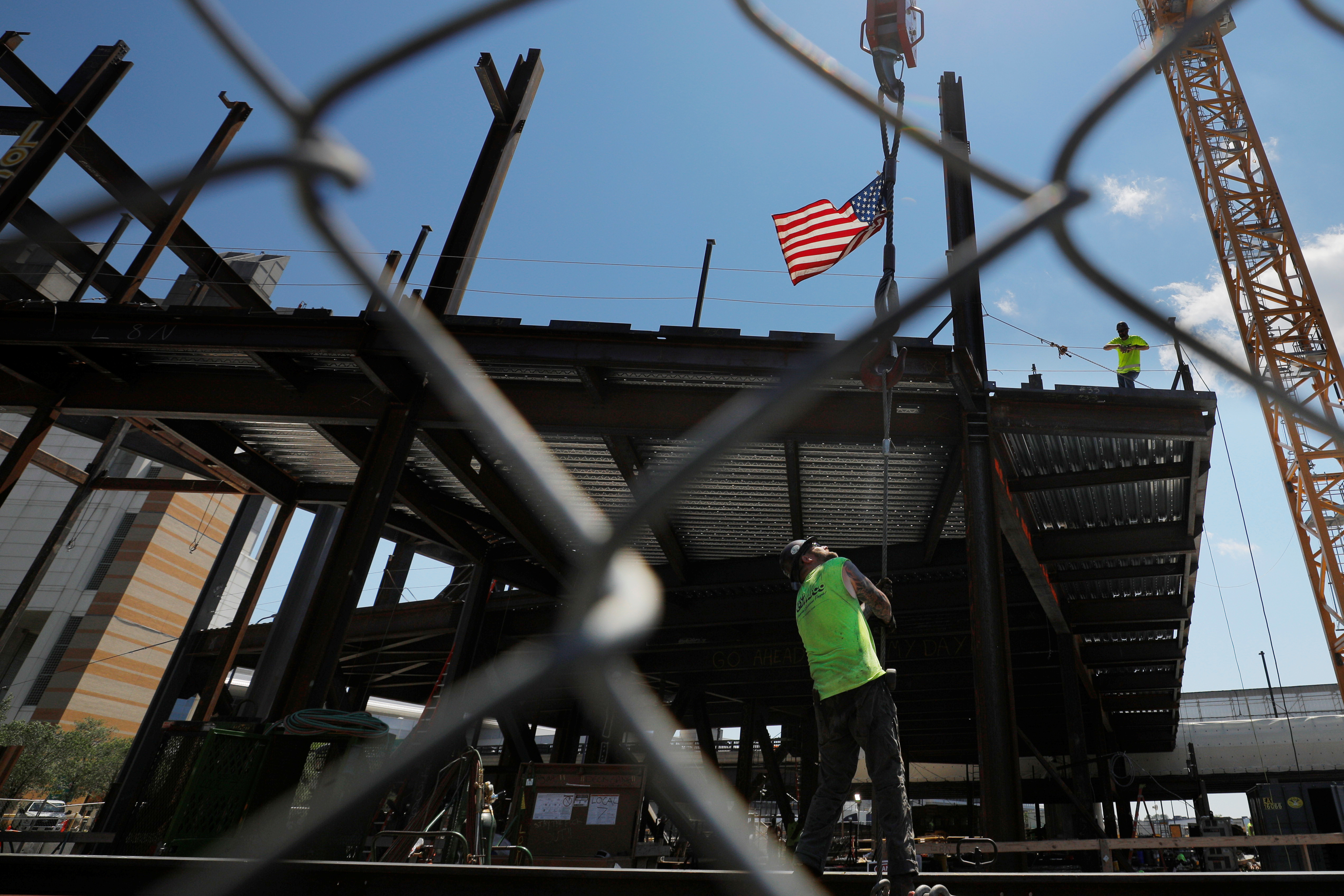pctay123
Publish Date: Mon, 26 Aug 2024, 15:32 PM

- Core capital goods orders fall 0.1% in July
- Core capital goods shipments decrease 0.4%
- Durable goods orders increase 9.9%
WASHINGTON, Aug 26 (Reuters) - New orders for key U.S.-manufactured capital goods unexpectedly fell in July and data for the prior month was revised lower, suggesting a loss of momentum in business spending on equipment that extended into the early part of the third quarter.
The report from the Commerce Department on Monday also indicated that the manufacturing sector continued to tread water amid higher interest rates. While orders for long-lasting manufactured goods rebounded sharply last month, aircraft accounted for the increase.
Still, the pace of growth in business equipment investment is likely sufficient to sustain the economic expansion.
"The economy hasn't hit the skids yet," said Christopher Rupkey, chief economist at FWDBONDS. "Business investment in long-lived core capital goods orders has slowed somewhat at the start of the third quarter, but new orders are miles away from indicating an economic recession for the broader economy."
Non-defense capital goods orders excluding aircraft, a closely watched proxy for business spending plans, dipped 0.1% last month after a downwardly revised 0.5% increase in June, the Commerce Department's Census Bureau said.
Economists polled by Reuters had forecast these so-called core capital goods orders would be unchanged after a previously reported 0.9% jump in June. Core capital goods orders rose 0.5% year-on-year in July.
Machinery orders were unchanged in July, while those for computers and electronic products dropped 0.7%. Orders for electrical equipment, appliances and components fell 0.4%. There were also decreases in orders for primary metals. But orders for fabricated metal products rose 0.2%.
Core capital goods shipments fell 0.4% after being unchanged in June. Non-defense capital goods orders rebounded 41.9%. They dropped 22.9% in June. Shipments of these goods rose 4.7% after increasing 6.1% in June.
Shipments go into the calculation of the business spending on equipment component in the gross domestic product report.
Business investment in equipment notched double-digit growth in the second quarter, with spending on goods largely holding up despite 525 basis points worth of interest rate hikes from the Federal Reserve in 2022 and 2023. It contributed to the economy's 2.8% annualized growth pace in the April-June quarter.
After accounting for inflation based on the producer price data, economists estimated that shipments were running below their second-quarter average. With the Institute for Supply Management as well as the regional Fed manufacturing surveys still pointing to weak orders, a contraction in business spending on equipment is a possibility, economists said.
"The upshot is that equipment investment is currently on track to post a modest 1.2% annualized gain in the third quarter, with overall GDP growth at 1.8%," said Paul Ashworth, chief North America economist at Capital Economics.
Stocks on Wall Street were trading mostly lower. The dollar was flat against a basket of currencies. U.S. Treasury yields fell.

AIRCRAFT ORDERS SURGE
The U.S. central bank has maintained its benchmark overnight interest rate in the current 5.25%-5.50% range for more than a year. Fed Chair Jerome Powell last Friday signaled rate cuts were imminent amid concerns over labor market weakness.
Financial markets expect the Fed to kick off its easing cycle next month with a 25-basis-point rate reduction, though a half-percentage point cut cannot be ruled out.
"We suspect a rebound in capital expenditures is coming as the Federal Reserve begins reducing its target range for the federal funds rate, but it will take some time for the accommodation of lower interest rates to filter through to the real economy," said Nicole Cervi, an economist at Wells Fargo.
"Today's data confirm the ongoing trend that manufacturers are largely standing idle until looser policy comes to fruition and supports broad-based order demand."
Orders for durable goods, items ranging from toasters to aircraft meant to last three years or more, surged 9.9% in July. That was the most in four years and followed a revised 6.9% drop in the prior month.
Durable goods orders were previously reported to have declined 6.7% in June. They were boosted last month by a 34.8% rebound in transportation orders after tumbling 20.6% in June. That reflected a 12.9% jump in defense aircraft orders. Motor vehicle orders fell 2.6%.
The Census Bureau did not provide a month-to-month percent change in civilian aircraft orders and parts because the denominator had a negative value.
Boeing (BA.N) , opens new tab reported on its website that it had received 72 orders for aircraft last month, sharply up from 14 in June. Cancellations are, however, rising as the world's largest aerospace company deals with a multitude of problems, including safety issues.
"As a result of Boeing's recent woes and also partly because the biennial Paris airshow took a break this year, aircraft cancellations outpaced new orders in June, with net new orders falling to -$4.2 billion last month," Ashworth of Capital Economics said. "Commercial aircraft net orders rebounded to $23.4 billion in July, however, as buyers made up for lost time at the Farnborough airshow, also held on alternate years."

Sign up here.
https://www.reuters.com/markets/us/us-core-capital-goods-orders-dip-july-2024-08-26/












